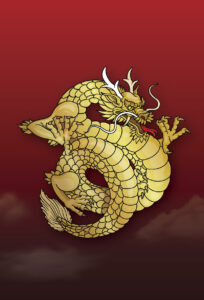Understanding Your Terrain Is Half the Battle
Sun Tzu’s The Art of War

In the ever-evolving landscape of business, where competition is fierce and strategies are key, Sun Tzu’s timeless wisdom encapsulated in The Art of War continues to resonate with profound relevance.
Written over two millennia ago, Sun Tzu’s strategic principles extend far beyond the realm of military tactics, offering invaluable insights that are remarkably applicable to the complex challenges of 21st-century business leaders. From the art of seizing opportunities to the power of self-knowledge, Sun Tzu’s teachings can enhance your strategic acumen in the pursuit of any business goal.
What Is It About?
The Art of War is the oldest and most famous military treatise. The military classic is attributed to Sun Tzu, a general whose battlefield exploits won him fame during China’s Warring States Period (approximately 400 B.C.). Many experts, however, believe that his followers have added and adapted the book over several centuries. Indeed, some scholars even question whether Sun Tzu existed in the first place or was merely a legend. Taken together, the book’s aphorisms provide a comprehensive guide to military strategy and tactics, including aspects such as the importance of understanding the terrain, the skilled use of deception, the efficient use of resources, the use of diplomacy as a tool of war, and the importance of keeping the morale of one’s forces high.
The greatest victory is that which requires no battle.
Sun Tzu, The Art of War

Three Life Lessons
1. Know Yourself and Your Enemy
Sun Tzu emphasizes the importance of self-awareness and understanding your adversary. Indeed, in war, as in life, knowing your strengths and weaknesses empowers you to choose actions that leverage the former and mitigate the latter. In turn, understanding the strengths and vulnerabilities – as well as perspectives and motivations – of the people you interact (or compete) with will help you navigate human interactions more effectively.
In Conscious, psychologists Bob Rosen and Emma-Kate Swann invite you to self-examine yourself with regard to four dimensions: your perceptions, beliefs, emotions and behavior. For each, determine the traits you possess that help or hinder your progress. Do you see yourself and others clearly and without bias? Do you open your mind to new ideas – or allow fear and assumptions to cloud your thinking? Do you permit negative emotions to obscure the landscape and prevent real change? Do you take action to reach positive results?
In The Power of Understanding Yourself, Dave Mitchell distinguishes between four “primary interactive styles” people fall into. Your dominant style preference is your automatic go-to route for connecting with others. Being aware of your habitual behaviors and knee-jerk reactions enables you to be on the lookout for situations where these behaviors won’t serve you – and to choose an alternative action.
Understanding yourself better will not just help you be more effective in getting others on your side; it also make you a better “people-reader.” Robert Greene has elaborated on this theme in several of his books. The ability to see behind people’s masks and anticipate people’s behaviors will get you farther than any special talents you might possess, Greene insists. If you want to shape the world around you and prevent your adversaries from gaining power over you, mastering self-control and knowing The Laws of Human Nature constitute your best self-defense.
2. The Importance of Timing
Sun Tzu teaches that knowing when to act and when to wait is crucial for success. In life and business, recognizing opportune moments and understanding when patience is needed can make a significant difference.
Are consumer preferences shifting? Are you dealing with a potential disruptor in your industry? Are new technologies being developed that are about to make your product obsolete? If you don’t want to get Blindsided, change expert Jim Harris explains, you must put the right systems in place to detect when it’s time to act. One such strategy is scenario planning: Imagine possible futures, identify potential threats and opportunities, and then develop possible responses and identify triggers for mobilizing these responses. This way, your company can recognize and respond more quickly to changes in the market.
If you’re in marketing, leverage modern metrics to develop more responsive campaigns in real-time. As Christina Inge explains in her practical guide, Marketing Metrics, knowing where you are on your product’s life cycle enables you to tailor your marketing activities accordingly.
Getting the timing right saves costs. Perfected by Toyota, just-in-time production is among the most famous innovations in auto manufacturing. It minimizes storage expenses and waste by producing goods only as needed. As Pascal Dennis explains in Lean Production Simplified, the objective is to create a “continuous flow” so the customer can “pull” from the production process.
Timing is an art that you also want to master in your personal life. Failing to pay attention when you do what can undermine your performance or lessen your chances of following through on a goal. In When: The Scientific Secrets of Perfect Timing, Daniel Pink explains how you can time your activities to correspond with your fluctuating cognitive abilities over the course of the day. He also teaches you how to schedule strategic breaks and pick the right start date for your next project.
3. Think Strategically, but Stay Nimble
Sun Tzu emphasizes the importance of strategic thinking and planning. At the same time, he cautions to remain flexible and adapt to changing circumstances. You need a compass to know where you’re going – yet the path to success rarely follows a straight line.
Complex environments are impossible to predict, so trying to impose a blueprint solution on an environment that keeps changing is futile. Faced with an unknown future, you must discover the right path by virtue of experimentation, argue Jennifer Garvey Berger and Keith Johnston in Simple Habits for Complex Times. Start with adopting an open, experimental mind-set. Gather multiple perspectives and then run small experiments to produce controllable outcomes. Follow up these experiments with additional testing and adjusting. Meanwhile, always be clear about the direction in which you are heading, even if you don’t know exactly how the endpoint will look.
Great leaders have a guiding vision but are not rigidly fixated on a particular game plan. They adapt, make adjustments and fine-tune their tactics as circumstances demand. In The Light and Fast Organization, long-time mountaineer and business consultant Patrick Hollingworth talks about the advantages of adopting an “alpine-style ethos” when pursuing any particular goal, while D. Christopher Kayes offers a cautionary tale of blindly executing a predetermined strategy in Destructive Goal Pursuit.
In Sun Tzu for Execution: How to Use the Art of War to Get Results, Steven W. Michaelson teases out five principles of strategic goal pursuit from The Art of War and applies them to a modern business setting. “Simplicity” emphasizes the effectiveness of executing straightforward ideas. “Create Alignment” stresses the importance of shared goals and measures of progress within a company. “People Always” underscores the significance of attracting, motivating, and retaining talented people. “Flexibility” advises against rigid adherence to plans and in favor of inviting diverse perspectives. Lastly, “Towering Strengths” focuses on enhancing and investing strategically in a company’s strengths for long-term superiority, akin to Sun Tzu’s emphasis on seizing favorable positions in battle.

























